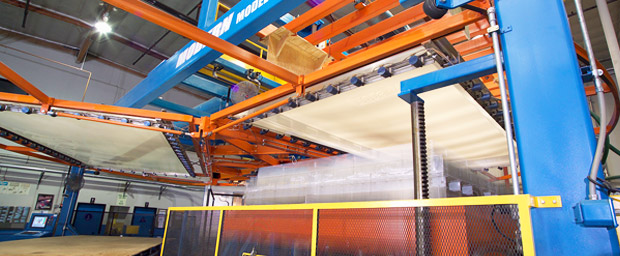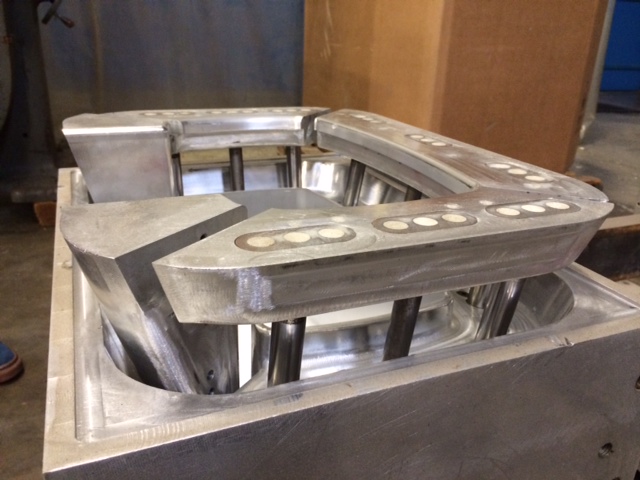We talk a lot about tooling here at Ray Products, but if you’re not familiar with pressure forming, you might not know what tooling is. So, we thought we’d help with a quick introduction to pressure forming tooling .
The Foundation of a Successful Project – Literally
A properly designed, and a built tool is critical to every pressure forming project. It’s one area where cutting corners is definitely a bad idea.
At Ray Products, we stand behind our tooling. We’ll guarantee the performance of your tooling for life, as long you’re using it for manufacturing in our facility.
What is a Pressure Forming Tool?
A pressure forming tool is a mold that creates the shape of a pressure formed part. It’s made to match the shape of the final part, and when the plastic is pressed against it, it takes on the shape of the mold.
Pressure forming tools can be made from a variety of materials, including wood or foam, but here at Ray Products we exclusively use temperature-controlled aluminum tooling.
For heavy gauge pressure forming, there’s no other material that can match the quality of temperature-controlled aluminum tooling. We think our customers deserve the best, and so that’s what they get.
If you’re familiar with injection-molding tooling, it might help to think of pressure forming tooling as ½ of an injection-molding tool. Only, pressure forming tooling typically costs about 75% less than comparable injection molding tooling.
How are Pressure Forming Tools Made?
Our tooling is made from billet-machined aluminum. That means we start out with a brick of aluminum, then mill away the raw material until we have a shape that matches your designs.
How Large can a Pressure Forming Tool Be?
At Ray Products, we operate the largest pressure former on the West Coast. We can create tooling for pressure formed parts up to 6-feet by 10-feet.
How Is Tooling Temperature Controlled, and Why Does it Matter?
It’s important that during the pressure forming process, the tooling maintains a consistent temperature. Without cooling, the tool would heat up during the pressure forming process, as it came into contact with more and more sheets of heated plastic. This would require waiting for the tool to cool between the molding of each part, and significantly slow the manufacturing process.
Our liquid cooling system circulates fluid through the tool during the pressure forming process, drawing heat away from the mold and allowing the production run to move rapidly while maintaining the quality of the thermoformed parts.
The cooling channels are created during the tooling manufacture process, using a precision drilling technique called “gun drilling”, that was originally developed for (you guessed it) drilling out the barrels of precision firearms.
How Do Pressure forming Tools Accommodate Undercuts?
Without special accommodation, deep undercuts would prevent a thermoformed part from being removed from the mold. That’s why, at Ray Products, we incorporate slides and moving cores into our pressure forming molds where necessary.
These allow the mold to shift after the plastic has been formed, to let the finished part be removed without resistance from undercuts and negative draft angles. Traditionally, this is done manually, but at Ray Products we have a fully automated system that contracts the tooling when the finished sheet of plastic is ready to be removed from the tool.
What’s Next
If you have questions about pressure forming tooling, we’re more than happy to help. Give us a call or send us an email, and we’ll have our tooling experts get back to you with an answer right away.


